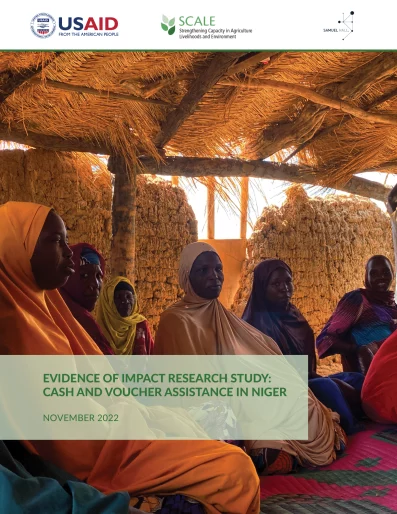Evidence of impact research study: Cash and voucher assistance in Niger
While in-kind assistance constitutes the bulk of humanitarian aid globally, Cash and voucher assistance (CVA) is quickly gaining ground among donors and practitioners. Between 2014 and 2020, the share of CVA-based support within the overall humanitarian assistance portfolio) increased 4.5 times — from 5% to 20% of the overall aid distributed.
Samuel Hall conducted a study to identify key issues impacting the effectiveness of CVA, including digital modalities, and formulate recommendations to improve it. This study focused on the International Rescue Committee (IRC)’s CVA programming in the Diffa region, Niger.
According to Samuel Hall’s findings, CVA recipients primarily prefer in-kind assistance, with a secondary preference for a combination of in-kind and cash because of factors such as gender dynamics and inadequate financial literacy. Many humanitarian practitioners support the shift to digital assistance, yet recipients expressed hesitancy with digital approaches due to limited accessibility.
The report highlights the need to pilot more interventions with a combination of in-kind and cash assistance, especially in areas with protracted crises and emergencies. Incorporating financial literacy training interventions as a core design component to maximize impact is becoming more widespread as CVA practitioners increase the use of digital solutions.



